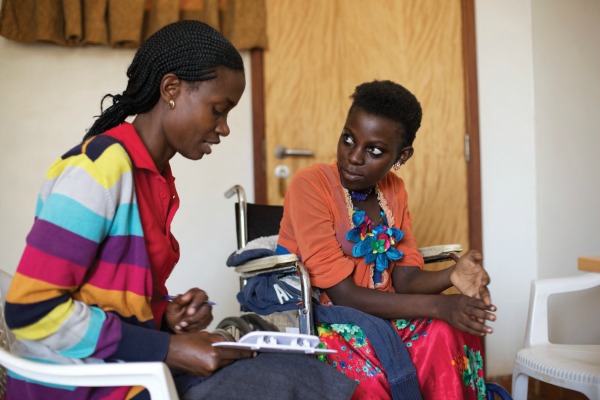It’s one of the realities of life in the poorest parts of the world today: As great strides are made against the parasites, viruses and malnutrition that have killed so many in childhood, dramatic changes in urbanization and globalization mean those who survive into adulthood are now being plagued by diseases associated with wealthier nations.
These non-communicable diseases, NCDs as they are known, kill 41 million people each year, the World Health Organization tells us. Fifteen million people around the world between the ages of 30 and 69 – people in the prime of life – die from cancer, cardiovascular disease, diabetes and chronic respiratory diseases annually, with more than half from the world’s poorest countries.
The focus of the development community until now has mostly been on infectious diseases, such as HIV, malaria, measles and TB. And that’s for good reason: They have spread widely and killed so many – the young and the old alike. And that focus has shown remarkable results. Malaria cases are down dramatically, as is the spread of HIV from mother-to-child, while many millions of people are on antiretroviral medication.
There is still work to do on infectious diseases, but it is imperative that we now also focus on the NCD scourge before these diseases become overwhelming in terms of economic burden and strains on weak and under-resourced health systems. On Thursday, the United Nations General Assembly is staging a high-level meeting on the prevention and control of NCDs, which will “undertake a comprehensive review of the global and national progress achieved in putting measures in place that protect people from dying too young from heart and lung diseases, cancers and diabetes.”
The good news is that we know what works to slow infectious diseases: Strategic communication, community engagement, entertainment-education and so much more. These behavior change approaches are particularly well-suited to use to fight NCDs.
That’s because these non-communicable diseases – the world’s most common diseases – are primarily caused by lifestyle choices: Poor diets, smoking, alcohol and drug consumption, being too sedentary. As economic growth in lower- and middle-income countries spurs more Western lifestyles, meat consumption and other unhealthy behaviors increase. Tobacco companies have poured their ad dollars into Africa and Asia as smoking rates declined in the U.S. In nations still suffering from malnutrition, some pockets within the same country are dotted with KFC and other Western-style fast-food restaurants. These are factors that lead to cancer, diabetes and cardiovascular disease.
Our work in behavior change communication is designed to inspire people to make healthy decisions.
We are already making some inroads into reducing the impact of NCDs. At CCP, we working with the American Cancer Society and UNICEF on programs designed to increase the use of the HPV vaccine globally to reduce cervical and other cancers by helping people to understand the value of the vaccine. In India, we are working with a team on an app to help children make good decisions about what they eat. We are working with the folks behind “Meatless Mondays” to help expand the program around the world.
There is so much to do. The WHO has set an ambitious goal of reducing NCD-related deaths by 25 percent by 2025. The key to getting there is a financial commitment, for sure. A recent WHO report argues that strategies requiring the 78 low and middle-income countries spend just an additional $1.27 per year per person could save 8.2 million lives by 2030.
What complicates things is that many countries suffer from a double burden of disease – in many cases, they still face malaria and HIV and other infectious diseases while also facing the rise of NCDs. The latter diseases are chronic diseases that are costly to treat and require specialization not often found in fragile health systems in lower income countries. And those who live in these poorer countries are having far worse outcomes than those who live in wealthier nations.
Any plan to reduce NCDs will require a comprehensive approach that decreases the risks associated with NCDs and promotes interventions to prevent and control them. Improvements in health care, finance, agriculture and more are all necessary. And, as we have learned, a key to all of this is a commitment to proven communication techniques that help people make better lifestyle choices. Their future depends on it.



